The Ultimate Guide to Commemorative Gold Coins for Collectors and Investors
By Stephen, Founder of Global Coin, who has a passion for commemorative coins. When I first held a gold coin in my hand, its weight and gleam pulled me in—but it was the story etched into its surface that hooked...
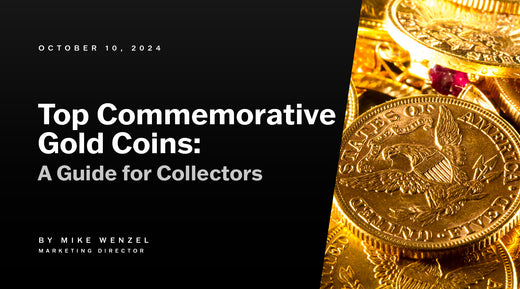
By Stephen, Founder of Global Coin, who has a passion for commemorative coins.
When I first held a gold coin in my hand, its weight and gleam pulled me in—but it was the story etched into its surface that hooked me for life. Today, as the founder of Global Coin, I’ve turned that spark into a mission: helping collectors and investors build rare coin portfolios that blend meaning, value, and long-term wealth. If you’re tired of shallow sales pitches and want to collect with purpose, this guide is for you.
What Are Commemorative Gold Coins?

Unlike bullion coins—whose value is tied to metal weight—commemorative gold coins are struck to honor moments, milestones, and icons that shaped the country's history. The US Mint issues special mint commemorative gold coins to honor the country’s milestones. Each one is a miniature sculpture, rich in narrative, symbolism, and numismatic value. And here’s what sets them apart: they’re often minted in limited numbers, sold with a surcharge that supports community causes, and authorized by the United States Congress, ensuring their significance and authenticity. These coins celebrate important events and figures from the country's history, connecting collectors to the nation’s heritage. You don’t spend them—you study them, admire them, and invest in them.
The Origin Story: America’s Legacy in Gold
The journey begins in America in 1892 with a silver half dollar minted for the World’s Columbian Exposition, which was the first commemorative coin issued by the US Mint. Gold followed shortly, evolving from patriotic fundraiser to collectible powerhouse that commemorates significant events in American history. From the 1903 Louisiana Purchase Gold Dollar to the modern commemoratives of today, every era has coins that embody its spirit and celebrate the country’s history. Over the course of more than a century, commemorative coin designs have evolved to reflect changing national themes.
Early gold commemoratives (1903–1954) weren’t mass-produced—they were created for causes, often through legislation. Take the 1916 McKinley Memorial Gold Dollar, which funded the president’s memorial in Ohio. These coins were tangible mission statements, including those designed for breast cancer awareness. And in 1982, when Congress relaunched the program with a George Washington half dollar to mark the 250th anniversary of Washington’s birth, a new chapter began—one still being written today.
Notable Early Commemorative Gold Coins You Should Know

Some of the best gold coins to collect are early commemoratives with tiny mintages and major backstories that spark interest :
-
1903 Louisiana Purchase Exposition Gold Dollar: Only 17,500 minted. Jefferson on the obverse, celebrating America’s expansion.
-
1904 Lewis and Clark Exposition Gold Dollar: Just 10,025 made. A tribute to American grit and discovery.
-
1926 Sesquicentennial Gold Quarter Eagle: Commemorating 150 years of independence. Its Liberty Bell motif is both literal and symbolic.
Because of their rarity and collectible nature, collectors may not always be able to obtain a specific coin of their choosing, making early commemoratives especially desirable.
These coins are more than historic—they’re heirlooms. In high grades, they’ve appreciated steadily, with auction results proving their demand among serious collectors.
Modern Commemorative Gold Coins: The Art of Now
Modern gold commemoratives bring fresh themes and bold design innovations. Coins like the:
-
1986 Statue of Liberty $5 Gold: Celebrates Lady Liberty’s centennial.
-
2006 San Francisco Old Mint $5 Gold: A tribute to the Granite Lady that survived the 1906 earthquake.
-
2016 National Park Service Centennial Coin: Nature, heritage, and art fused into one masterpiece.
Another notable example is the Breast Cancer Awareness Coin, which supports the Breast Cancer Research Foundation, emphasizing the philanthropic impact and benefit of supporting charitable causes through the purchase of certain modern commemorative coins.
Minted with techniques like proof and reverse proof finishes, these coins blend high-relief visuals with deep meaning. Many sell out quickly and become hot items on the secondary market.

Types of Commemorative Coins
Commemorative coins are a unique way to celebrate significant people, places, events, or institutions. They come in various types, each with its own charm and purpose:
-
Gold Commemorative Coins: These are often minted to mark major milestones or anniversaries in a country’s history. Made of gold, they are not only valuable but also carry a deep historical significance. For instance, the 1986 Statue of Liberty $5 Gold coin commemorates the centennial of the iconic statue, blending artistry with historical importance.
-
Silver Commemorative Coins: While not as valuable as gold, silver commemorative coins are still highly prized. They often celebrate important events or anniversaries that may not warrant a gold coin but are still significant. An example is the American Silver Eagle, which features Lady Liberty on the obverse and a bald eagle on the reverse, symbolizing freedom and strength.
-
Copper Commemorative Coins: These are typically used for less significant events or anniversaries. Although they don’t carry the same intrinsic value as gold or silver, they are still collectible and often feature intricate designs.
-
Bi-metal Commemorative Coins: Combining two different metals, such as gold and silver, these coins are used to commemorate particularly significant events. The use of two metals can symbolize unity or duality, adding another layer of meaning to the coin.
The shape and design of each commemorative coin are carefully chosen to reflect the specific theme or event being honored, making each piece visually distinctive and symbolically meaningful.
Each type of commemorative coin offers a unique way to celebrate and remember important moments, making them a fascinating addition to any collection.
Legal Tender, But Not Pocket Change
Yes, commemorative gold coins are legal U.S. tender, minted by the US Mint. But don’t let the $5 or $10 face value (denominated in USD) fool you—they often sell for hundreds or thousands based on rarity, gold content, and collector demand. Because they’re authorized by Congress and struck by the U.S. Mint, these coins come with authenticity baked in.

Why I Believe These Coins Belong in Every Smart Collection
Let me be blunt: gold commemoratives are wildly underrated.
Here’s why I recommend them to serious investors and collectors:
-
Limited Production: Some have mintages under 10,000.
-
Cultural Significance: They capture defining moments in precious metal.
-
Gold’s Intrinsic Value: A hedge against inflation, market crashes, and fiat instability.
-
Non-Correlated Asset: When the stock market drops, gold holds steady—or rises.
-
Artistry: These coins aren’t just round metal—they’re museum-grade miniatures.
They’re also discreet, liquid, and global. You can hold your wealth in your hand, without third-party oversight or digital risk. Collectors can be proud to own such significant pieces of history and artistry.
Understanding Gold Coin Values
The value of a gold coin is influenced by several key factors, each contributing to its overall worth:
-
Weight: Gold coins are typically measured in troy ounces, with common weights ranging from 1/10 oz to 1 oz. The weight directly impacts the coin’s value, as more gold means a higher intrinsic value.
-
Purity: The purity of a gold coin is measured in karats, with 22-karat (91.6% gold) and 24-karat (99.9% gold) being the most common. Higher purity means more gold content, which increases the coin’s value. For example, a 24-karat gold coin is almost pure gold, making it more valuable than a 22-karat coin.
-
Numismatic Value: Beyond the intrinsic value of the gold, the numismatic value considers the coin’s rarity, condition, and demand. Rare coins, especially those in excellent condition, can command a significant premium over their melt value. For instance, a well-preserved 1903 Louisiana Purchase Exposition Gold Dollar can be worth much more than its gold content alone due to its historical significance and limited mintage.
Understanding these factors can help collectors and investors make informed decisions when buying or selling gold coins, ensuring they get the best value for their investment. It is also important to take account of premiums and potential profits when assessing the value of gold coins.
Where to Buy (Without Getting Burned)
Here’s my hard-won advice after two decades in the business:
-
Buy from Trusted Sources: The U.S. Mint, reputable dealers like Global Coin, and select auction houses.
-
Beware of Bargain Bins: If a price seems too good to be true, it probably is. Counterfeits are real.
-
Prioritize Graded Coins: Stick with PCGS or NGC-certified pieces. An MS-70 or PF-70 coin retains both visual appeal and value.
Collectors can easily browse a wide selection of commemorative gold coins online, making it convenient to compare options and find the right piece. If you have questions about availability or need help with your order, don't hesitate to contact the customer service team for assistance.
How to Authenticate and Protect Your Coins
Authentication is non-negotiable. Look for:
-
Mint Marks: Confirm U.S. Mint origin.
-
Third-Party Grading Slabs: Sealed, tamper-proof, and trusted.
-
Documentation: Receipts, certificates, and photos help with insurance and resale.
Store your coins in climate-controlled safes (ideal temp: 65°F, 50% humidity) and consider insurance through specialists like Hugh Wood Inc.
Storing and Caring for Pure Gold Coins
Proper storage and care are crucial to maintaining the condition and value of pure gold coins. Here are some essential tips:
-
Store Coins in a Cool, Dry Place: Gold coins should be kept away from direct sunlight and moisture. A cool, dry environment helps prevent tarnishing and other damage.
-
Use a Coin Album or Folder: Coin albums or folders provide a protective barrier against scratches and other physical damage. They also help organize your collection, making it easier to manage and display.
-
Handle Coins Carefully: Always handle gold coins by their edges to avoid fingerprints and scratches. Wearing cotton gloves can provide an extra layer of protection.
-
Avoid Cleaning Coins: Cleaning gold coins can damage their surface and reduce their value. If a coin needs cleaning, it’s best to consult a professional who specializes in coin conservation.
By following these guidelines, you can ensure that your pure gold coins remain in pristine condition, preserving their beauty and value for years to come.
The Investment Edge: Real Performance, Real Legacy
Some say collectibles are passion plays, not investments. I disagree. The 1986 Statue of Liberty $5 Gold has climbed steadily, outpacing inflation and matching other hard assets. Many modern pieces—especially low-mintage proof coins made of pure gold —have doubled or tripled in value over 10–20 years.
At Global Coin, we use a proprietary tool—the GCS Index—to evaluate not just metal weight, but narrative strength, market momentum, and rarity. It’s how we advise clients with confidence.
The Art of Coin Design
The visual impact of these coins can’t be overstated. From Augustus Saint-Gaudens’ iconic Liberty to Frank Gasparro’s striking modern designs, each coin is a blend of vision and technique. On the reverse, many coins feature the American bald eagle clutching arrows and an olive branch, symbolizing both defense and peace—classic elements of American iconography. They’re numismatic collectibles, yes—but also art you can invest in.
Mint Processes: How Commemorative Gold Coins Are Made
The journey of every commemorative gold coin begins at the United States Mint, where artistry and precision come together to honor America’s rich history. Each coin is more than just a piece of gold—it’s a testament to the country’s legacy, crafted with care to celebrate milestones, icons, and pivotal moments in American history.
The process starts with inspiration. Talented artists and engravers at the mint draw from the nation’s past, designing coins that capture the spirit of the event or person being commemorated. Every detail, from Lady Liberty’s flowing robes to the powerful wings of the American bald eagle, is meticulously planned to ensure the coin tells a story that resonates with collectors and investors alike.
Once the design is finalized, master engravers create detailed dies—essentially the molds that will stamp the design onto each gold coin. These dies are crafted with incredible precision, ensuring that every line, curve, and symbol is faithfully reproduced on the finished product.
Next comes the preparation of the gold blanks. The United States Mint uses only the highest quality precious metals, carefully measuring and cutting each blank to exact specifications. These blanks are then cleaned and polished, ready to be transformed into commemorative coins.
The striking process is where the magic happens. Using immense pressure, the mint presses the engraved dies into the gold blanks, bringing the design to life in stunning relief. For special issues, techniques like proof or high-relief striking are used to enhance the coin’s visual impact, making each piece a miniature work of art.
After striking, every coin undergoes a rigorous inspection. The mint’s quality control team examines each gold coin for perfection, ensuring that only the finest examples make it into the hands of collectors. Security features and authentication marks are also added, safeguarding the coin’s value and authenticity.
Finally, the commemorative gold coins are carefully packaged—often with certificates of authenticity and special presentation cases—before being released for sale. Whether you’re adding to your collection or investing in a piece of American history, you can trust that each coin from the United States Mint is a product of exceptional craftsmanship and enduring value.
From concept to completion, the minting process is a blend of tradition, technology, and artistry—ensuring that every commemorative gold coin is a lasting tribute to the events and people that shaped our country’s history.
Special Editions: What to Watch For
If you’re looking to start strong, I recommend focusing on:
-
Anniversary Issues (like the 2020-W V75 Gold Eagles)
-
Ultra-Low Mintages (under 10,000 is the sweet spot)
-
Error Coins (e.g., the “Frosted Freedom” Platinum Eagle)
-
Unique Finishes (reverse proof, high relief, or privy marks)
These coins often become cornerstone pieces in top-tier collections.
Popular Types of Commemorative Coins
Several commemorative coins have gained popularity among collectors due to their unique designs and the significant events they commemorate:
-
American Gold Eagle: This 22-karat gold coin features a stunning design of Lady Liberty on the obverse and a bald eagle on the reverse. It’s a favorite among collectors for its beauty and symbolism.
-
American Silver Eagle: Made of 1 oz of pure silver, this coin also features Lady Liberty on the obverse and a bald eagle on the reverse. It’s highly sought after for its design and silver content.
-
Breast Cancer Awareness Coin: This unique coin is made of pink gold and features a design of a woman fighting breast cancer on the obverse and a tiger swallowtail butterfly on the reverse. A portion of the proceeds from its sale supports breast cancer research, adding a philanthropic aspect to its value.
-
Apollo 11 Commemorative Coin: Celebrating the historic moon landing, this gold coin features the Apollo 11 spacecraft on the obverse and the American flag on the reverse. It’s a tribute to one of humanity’s greatest achievements.
These coins not only commemorate important events but also offer collectors a chance to own a piece of history, making them valuable additions to any collection. Collectors can choose from a wide selection of designs featuring diverse patriotic symbols and historical figures, and US commemorative gold coins attract interest from collectors around the world.
Collector’s Guide to Commemorative Coins
Collecting commemorative coins can be a rewarding hobby, but it’s important to approach it with knowledge and care. Here are some tips for collectors:
-
Research the Coin: Before purchasing a commemorative coin, research its history, design, and mintage. Understanding the coin’s background can help you determine its legitimacy and value.
-
Check the Coin’s Condition: The condition of a coin significantly affects its value. Look for coins that are well-preserved and free from scratches, dents, or other damage.
-
Consider the Coin’s Rarity: Rare coins often command higher prices. Check the mintage numbers and market demand to gauge a coin’s rarity.
-
Store Coins Properly: Proper storage is essential to maintaining a coin’s condition and value. Use coin albums, folders, or climate-controlled safes to protect your collection.
By following these guidelines, you can build a valuable and meaningful collection of commemorative coins, preserving pieces of history for future generations.
How to Start Your Collection Today
Here’s my 3-step formula for beginners:
-
Pick a Theme: Presidents, wars, national parks—whatever moves you.
-
Buy One Iconic Coin: Start with something like a 2006 San Francisco Old Mint $5 Gold.
-
Track and Learn: Use tools like PCGS CoinFacts or join forums (or follow me on X @StephenGoldGuru).
Focus on quality over quantity. One PF-70 coin says more than a shoebox of mediocre strikes.
Mistakes to Avoid
-
Don’t buy raw coins unless you’re an expert.
-
Avoid coins without a clear narrative or market appeal.
-
Don’t skip storage—scratches kill value fast.
Final Thoughts: This is Legacy Investing
When you buy a commemorative gold coin, you’re not just buying metal—you’re buying meaning. You’re staking a claim in history and passing down something tangible, beautiful, and valuable.
At Global Coin, we’re not just in the business of selling coins—we’re in the business of helping you build a legacy.
Ready to start your collection? Let’s talk.
📩 Reach out via shopglobalcoin.com
🐦 Follow me on X: @coindealerguy
Frequently Asked Questions
Are commemorative gold coins a good investment?
Yes—if you choose wisely. Look for coins with low mintage, historical significance, and high grading, focusing on the date of release .
What’s in a $5 commemorative gold coin?
Typically, about 1/4 troy ounce of fine gold.
Are these coins legal tender?
Yes, but they’re worth far more than face value in the collector’s market.
Where can I buy them safely?
Through trusted dealers like Global Coin, certified auction houses, or the U.S. Mint.
Can I resell them easily?
High-grade commemorative gold coins are liquid assets, especially when authenticated and stored properly.
Related Articles
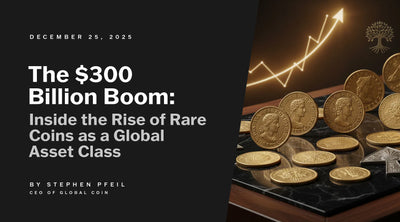
The $300 Billion Boom: Inside the Rise of Rare Coins as a Global Alternative Asset Class
The $300 Billion Boom: Inside the Rise of Rare Coins as a Global Alternative Asset Class In a fi...
Discover More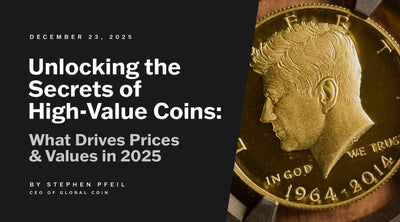
Unlocking the Secrets of High-Value Coins: What Drives Prices and Values in 2025
Unlocking the Secrets of High-Value Coins: What Drives Prices and Values in 2025 In the ever-ev...
Discover More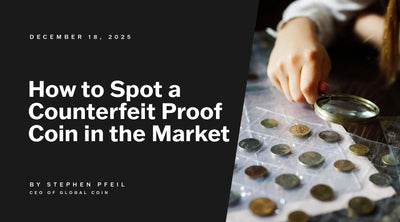
How to Spot a Counterfeit Proof Coin in the Market
How to Spot a Counterfeit Proof Coin in the Market In the world of numismatics, few things hold ...
Discover More


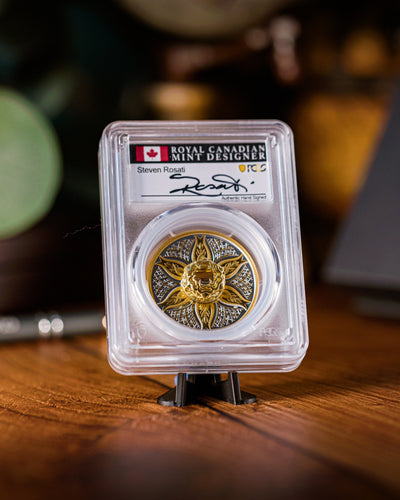
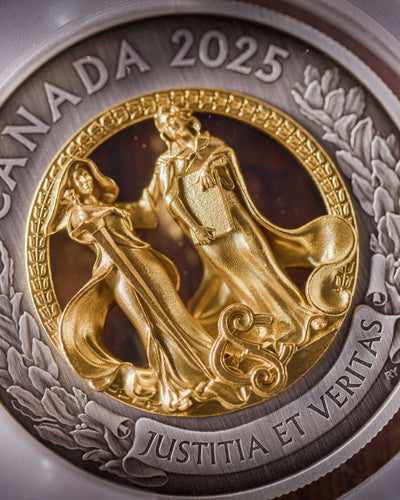

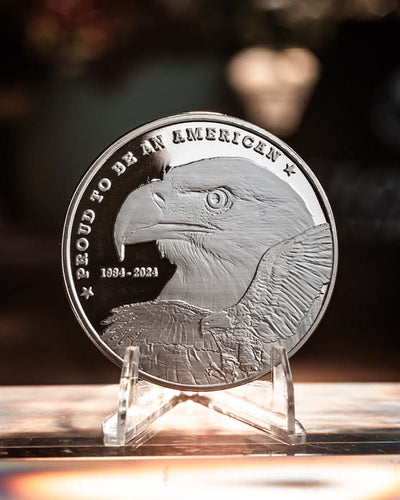
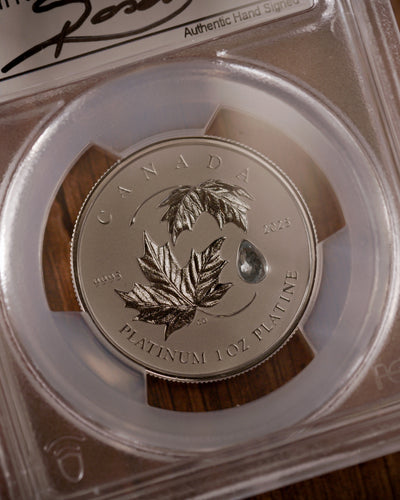


1 comment
I’m interested in starting a collection
SHELDON CHARAPP
Leave a comment
This site is protected by hCaptcha and the hCaptcha Privacy Policy and Terms of Service apply.